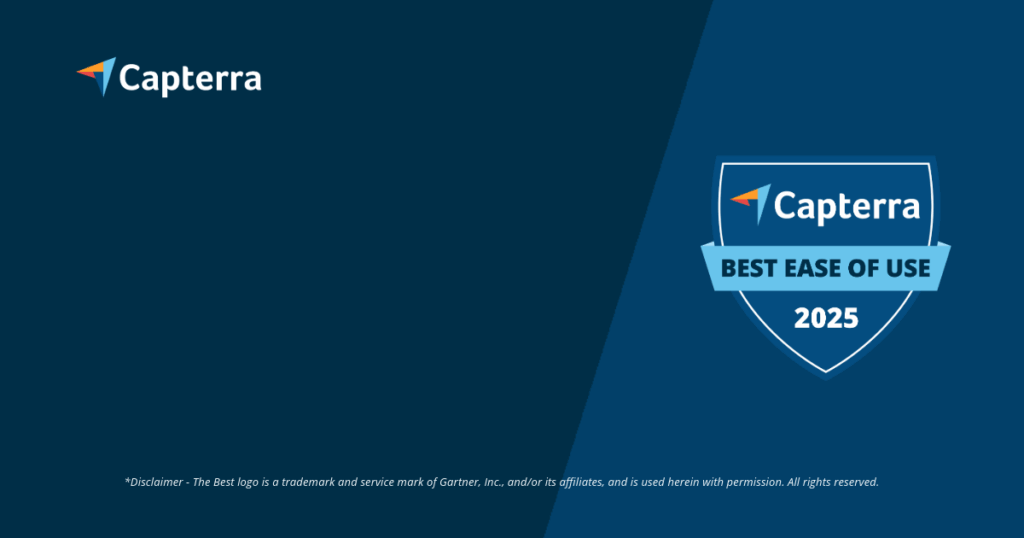Digital LV Creation: Here’s how to bring efficiency and precision to your construction projects
What exactly is a Leistungsverzeichnis (LV) and why is it essential for your construction project?
A Leistungsverzeichnis, or LV for short, is the absolute heart of every construction tender and billing. Think of it as a detailed roadmap that precisely defines the type and scope of all services for a construction project. This precise listing is the binding basis for cost estimation, bid preparation by contractors, and ensures transparent contract awarding. Especially in the public sector, where the regulations for the awarding of construction services (VOB/A) set the tone, the LV plays a key role. A high-quality bill of quantities software is your best partner here to efficiently master these complex requirements and ensure clarity from the very beginning. Because let’s be honest: Without an accurate LV, misunderstandings and cost overruns are often pre-programmed – which underscores how important this document really is. Investing in a good bill of quantities software pays off quickly, as it optimizes the entire process from creation to billing and greatly facilitates the collaboration of all project participants. Discover how you can elevate your processes with the right construction software to the next level.
- Central role: The LV is the cornerstone for construction tenders and billing, defining the type and scope of all project services.
- Binding basis: It serves as the basis for cost estimation, bid preparation, and transparent contract awarding, especially in the public sector (VOB/A).
- Error prevention: An accurate LV prevents misunderstandings and cost overruns.
- Software support: Modern bill of quantities software optimizes the creation process and minimizes the risks of traditional methods like Excel.
The pitfalls of traditional LV creation: Why Excel & Co. often can’t keep up
Do you know this? The manual creation of bills of quantities, for example with spreadsheet programs like Excel, is not only a real time waster but also extremely prone to errors.. The constant copying and pasting of items, the manual calculation of quantities and prices, and a lack of central data management – all of this quickly leads to inconsistencies and errors that can be costly. Changes and updates often become a test of patience and unnecessarily complicate teamwork. The immense time spent on creation and maintenance ties up valuable resources that you could certainly use more effectively. A professional bill of quantities software on the other hand, minimizes these risks through clever automation and structured data management. Especially for complex projects requiring precise quantity determination according to VOB it is simply no longer up-to-date to rely on manual methods and can jeopardize your company’s competitiveness.
Advantages of modern bill of quantities software: More than just a bit of time savings
The use of specialized bill of quantities software brings you far more than just speeding up your work processes. You benefit from a significant reduction in errors thanks to automated checks and standardized text modules. The centralized data management ensures a consistent and always up-to-date data foundation for all project participants – this not only improves internal collaboration but also communication with external partners. Changes in the LV can be implemented and tracked quickly and easily, greatly increasing your flexibility. Additionally, many solutions support compliance with standards such as VOB or DIN 276 and facilitate standardized data exchange via GAEB. Therefore, investing in such software is an important step towards professionalization and efficiency enhancement throughout the construction process. Here are some of the key advantages at a glance:
- Efficiency booster: By automating routine tasks, you save valuable time that you can use for more demanding planning aspects, supported by a bill of quantities software modern approach.
- Fewer errors, less stress: Integrated plausibility checks and standardized templates in the bill of quantities software minimize the risk of costly errors.
- Teamwork makes the dream work: Centralized data management and clear structures enable smooth collaboration within the team and with external partners, often supported by suitable project management software for construction.
We at Valoon GmbH understand the challenges of the construction industry all too well. With our innovative solution, we want to help you optimize your communication and project management. Even though we do not offer a pure bill of quantities software in the traditional sense, our platform does help to significantly simplify the data collection and information flow that is so important for creating and processing LVs. Find out how you can make your construction projects more efficient and contact us for individual consulting – we look forward to hearing from you! Contact with us for personalized advice – we look forward to seeing you!What your LV software really needs to do: GAEB compliance and data handling under control
GAEB compliance and data exchange: The standard for smooth construction processes
The Joint Committee on Electronic Data in Construction, better known as GAEB, has established standards for the electronic data exchange of construction information in Germany – and that is a good thing! A GAEB-compliant bill of quantities software is therefore an absolute must to ensure smooth information flow between planners, contracting authorities, and executing companies. The software should easily master the common GAEB data exchange phases and formats like GAEB XML (e.g., X83 for bills of quantities, X84 for bids). Many bill of quantities software programs even offer integrated GAEB testers that check your LVs for compliance and highlight sources of error before the data is sent. This prevents annoying compatibility issues and ensures that all parties work with the same, accurate information. Also, the ability to process different GAEB versions is invaluable, as not all project partners always use the latest version. A good bill of quantities software often provides practical conversion functions between older (D8x, P8x) and newer (X8x) formats.
- GAEB compliance: Support for common GAEB formats (e.g., X83, X84) and versions is crucial for smooth data exchange.
- Flexible interfaces: The software should allow for various data imports/exports (Excel, Word, PDF) and integrations with tender text systems (STLB-Bau, DBD-BIM).
- Precise calculation bases: Integrated tools for quantity determination (if necessary, according to REB 23.003) and cost structuring according to DIN 276 are essential.
Data import and export: Flexibility is key thanks to diverse interfaces
Modern bill of quantities software is often recognizable by its high flexibility in data import and export. In addition to GAEB formats, support for other common file types such as Excel (XLSX), Word (DOCX), or PDF is important for importing existing LVs or easily sharing evaluations. A crucial function of a bill of quantities software is the integration with tender text systems like STLB-Bau, DBD-BIM, SIRADOS, or HeinzeBauOffice. These systems provide VOB-compliant and current standard performance texts that you can directly incorporate into the LV – improving quality and giving you legal certainty. The ability to migrate data from older systems or from an ERP software for the construction industry can save a tremendous amount of time during software implementation. So pay attention to a wide range of supported interfaces so that the software integrates optimally into your existing IT landscape.
Quantity determination and cost estimation: Precision as a solid foundation for success
Accurate quantity determination is the basis for reliable cost estimation and thus for the economic success of your construction project – this is non-negotiable. A powerful bill of quantities software provides you with integrated tools for quantity determination, often using formula editors that enable calculations according to REB 23.003 (regulations for electronic construction billing). The software should also support the structuring of costs according to DIN 276 (costs in building construction) to ensure transparent and understandable cost planning and control. The ability to assign performance items directly to cost groups or cost bearers is essential for detailed controlling. Some advanced systems even allow for the transfer of quantities from CAD or BIM models, further automating the process and reducing sources of error. A precise construction software for cost estimation is therefore an indispensable part of any good bill of quantities software.The agony of choice: How to find the perfect LV software for your company
Cloud-based or local installation? The right decision for your company
When selecting a bill of quantities software you often face the question: Cloud solution or a locally installed software? Cloud solutions score with data centralization and location-independent access. Teams can collaborate more easily, and the IT management effort is often lower since updates and maintenance are handled by the provider. In contrast, local installations offer more control over your own data and are not dependent on a stable internet connection. When choosing a cloud solution, it is particularly important to keep an eye on aspects such as data security and compliance when using a bill of quantities software cloud-based system. Make sure that the server location is ideally within Europe to ensure compliance with GDPR. Carefully weigh the pros and cons to find the solution that best fits your company structure and working methods. For many craftsman softwareapplications, the cloud has already become the standard.
Functionality and scalability: Solutions that grow with your requirements
The functionality of a bill of quantities software should be precisely tailored to the specific needs of your company – not too much, not too little. Small architectural firms have different requirements than large construction companies. Consider carefully which modules you really need: pure LV creation with a bill of quantities software, bid calculation, price comparison, billing, or the complete AVA solution (tendering, awarding, billing)? The scalability of the software is another important point. After all, the solution should grow with your company. Also check the integration options with your existing software landscape, such as accounting programs, your project management software for construction or ERP systems. Good software adapts to your processes – not the other way around. Your investment should be made with a long-term perspective in mind and also consider future developments.
User-friendliness and support: The key to acceptance and efficient use
What good is the most feature-rich bill of quantities software, if it is complicated to use and not accepted by employees? Exactly, not much! An intuitive user interface and low training effort are therefore decisive selection criteria. Many providers offer free trial versions or online demos – take this opportunity to thoroughly test the bill of quantities software in practice. Also pay attention to the quality of support: Is there a comprehensible manual, a hotline for tricky cases, or even online seminars? Good support can be invaluable during implementation and ongoing operation. Choosing the right software is an important step towards digitizing your office processes, much like choosing appropriate office software for architects.
Costs and licensing models: Transparency is key here
The costs for a bill of quantities software can vary significantly depending on the scope of functions and the licensing model. Common models include:
- One-time purchase: You acquire a license for permanent use, often associated with annual maintenance fees for updates and support.
- Subscription (SaaS): You pay a monthly or annual fee for using the software, with updates and support usually included. This is typical for cloud solutions.
- Pay-per-Use: Costs are incurred based on usage, e.g., per created bill of quantities or per user.
Make sure to pay attention to a transparent pricing structure and specifically ask about any possible hidden costs, e.g., for additional modules, interfaces, or support services. Compare not only the acquisition costs but also the long-term total operating costs (Total Cost of Ownership). A seemingly inexpensive bill of quantities software can quickly turn out to be expensive due to high follow-up costs.Who can do what? A look at well-known bill of quantities software solutions
Selected bill of quantities software solutions for you under the microscope
The market for bill of quantities software is truly diverse and offers solutions for a wide range of needs and company sizes. From comprehensive AVA complete packages to specialized tools for architects or tradespeople, everything is included. Below, we would like to introduce you to some well-known solutions that are frequently used in the construction industry. This selection aims to provide you with an initial impression of the possibilities that a bill of quantities software can offer. We would like to emphasize: The ‘best’ bill of quantities software is always the one that fits your individual processes and requirements optimally. A thorough examination of various options is therefore essential. Many providers, such as the frequently mentioned ORCA AVA or NOVA AVA, offer detailed information and trial versions on their websites – a good foundation for your decision-making process. Integration with standards like is a common and important feature.
NOVA AVA: Comprehensive construction management with a strong focus on bill of quantities creation
NOVA AVA presents itself as a comprehensive construction management software, where the creation of bill of quantities is clearly at the center. The software supports the import of bills of quantities in formats such as GAEB, ÖNORM A 2063, and Excel, significantly simplifying the adoption of existing data. A special highlight is the integration with common tender text systems like STLB-Bau, DBD-BIM, BKI, and Heinze, making high-quality and VOB-compliant texts quickly available. The ‘NOVA SmartPool’ is an interesting feature: a community-based database with performance items and market prices. This can indeed help in price determination, although the utility naturally depends on the activity of the user base. The software emphasizes detailed quantity determination with formula editor and supports cost center allocation. For users seeking an integrated solution that goes beyond pure bill of quantities software , NOVA AVA could be an exciting option.
Compa: Browser-based bill of quantities creation specifically for architects and planners
Compa targets its browser-based bill of quantities software primarily at architects and planners, especially smaller firms looking for quick and professional bill of quantities creation. A core component is the bill of quantities and price database, which, according to the provider, delivers up-to-date prices from real tenders – a potential advantage over static price lists. The software runs without installation on MacOS and Windows and supports the GAEB standard for data exchange. Functions for quantity determination, including comments and photo attachments, aim to reduce errors during manual data transmission. Compa specifically addresses issues with older systems, such as data loss, through its cloud architecture. The ease of use and focus on speed makes it an attractive solution for users who prefer a straightforward and modern bill of quantities software .
ORCA AVA: GAEB- and BIM-compliant solution for the entire AVA process
ORCA AVA is an established software that covers the entire AVA process (tendering, awarding, billing) with a strong focus on GAEB compliance and OpenBIM integration ; this bill of quantities software indicates advanced capabilities in handling complex data formats and an orientation towards modern, collaborative planning methods. The software enables cost management according to DIN 276 and offers VOB-compliant tenders, which is particularly relevant for public sector projects. The support of STLB-Bau for VOB-compliant performance descriptions is explicitly mentioned. REB standards are supported for quantity determination. Customer feedback often highlights the user-friendliness and customer support. ORCA AVA targets architects, civil engineers, and public construction authorities, thus offering a wide range of functions for professional users of a bill of quantities software.Here’s how to do it right: Tips for error-free and norm-compliant bills of quantities with software support
Structuring the bill of quantities: Ensure clarity from the start
A clear and logical structure is key to every good bill of quantities – we cannot emphasize this enough. Your bill of quantities software should optimally support you in creating a hierarchical breakdown into lots (for larger projects), trades, sections (titles), and individual performance items. Each item needs a unique order number (OZ), a precise quantity specification with a unit, a catchy short text, and a detailed long text clearly describing the service. Ensure that the performance descriptions are product-neutral unless a product specification is technically required and justified. A clean structure not only facilitates calculation and bid submission but also significantly eases later construction execution and billing. Use the structuring options of your bill of quantities software consistently to keep track. A good bill of quantities software can also provide valuable support by offering predefined structures and texts that can be integrated into your bill of quantities software .
- Logical structuring: Use software functions for a clear breakdown into lots, trades, sections, and items with clear order numbers and precise descriptions.
- Compliance with standards: Ensure compliance with relevant standards such as VOB and DIN 276, ideally supported by integrated standard texts and structuring aids in the software.
- Quality assurance: Use integrated checking functions and the four-eye principle to ensure completeness, plausibility, and norm compliance, and to minimize errors.
Standards and guidelines in view: How to ensure legal certainty
Compliance with relevant standards and guidelines is essential for creating legally secure bills of quantities. In the German construction industry, particularly the VOB (Procurement and Contract Regulations for Construction Services),Parts A and C, as well as the DIN 276 (Costs in Building Construction) should be mentioned. Your bill of quantities software should provide you with functions that actively support you in norm-compliant creation, such as the integration of standard performance texts (e.g., STLB-Bau) that are VOB-compliant, or the option to classify costs according to the cost groups of DIN 276. It is important that the bill of quantities software allows for the correct application of various position types (normal, demand, optional, additional items, etc.), as these have different impacts on calculation and billing. Stay informed about current changes in standards regularly and ensure that your software and templates are always up to date. This is an important aspect of using any construction software.
Quality assurance and error prevention: Four eyes see more
Despite all the clever support from modern bill of quantities software , human oversight remains a crucial factor for quality assurance. Use the integrated checking functions in the bill of quantities software to check your bills of quantities for completeness, plausibility, and GAEB compliance. Many programs will alert you to missing quantity specifications, units, or illogical hierarchies. It is also highly recommended to apply the four-eye principle: Have important bills of quantities proofread by an experienced colleague before they leave the house. Regular internal training on the correct use of the software and relevant standards can also help minimize errors. Always remember: An erroneous bill of quantities can lead to significant additional costs, construction delays, and unpleasant legal disputes. Care taken in creation always pays off!
To ensure the quality of your bills of quantities, you should consider the following points:
- Check for completeness: Are all necessary services actually recorded? Are there missing quantity specifications or units?
- Check for plausibility: Are the described services technically correct and executable? Do quantities and prices match?
- Ensure compliance with standards: Are VOB, DIN standards, and other relevant guidelines followed? This is especially important when using a bill of quantities software.
Look into the future: How BIM, AI, and cloud technology are revolutionizing bill of quantities creation
BIM integration: Bills of quantities directly from the digital model
Building Information Modeling (BIM) is profoundly transforming planning and construction processes – and this is just the beginning! The seamless integration of bill of quantities software with BIM models is a crucial trend. Imagine: Instead of painstakingly determining quantities manually, these can be extracted directly from the digital building model. This not only significantly reduces the effort but also minimizes the sources of errors that lurk in manual transmission. Advanced BIM-capable bill of quantities software allows components in the model to be linked to performance items and automatically updates changes in the model in the bill of quantities. The result? A consistent data basis throughout the entire project lifecycle and significantly improved visualization and communication between all project participants. The ability to process IFC files (Industry Foundation Classes), the standard exchange format in the OpenBIM process, is becoming increasingly important for a bill of quantities software .
Artificial Intelligence (AI) and Machine Learning (ML): Smart assistants for bill of quantities creation
Artificial intelligence and machine learning are increasingly entering the construction industry and thus also into the bill of quantities software. AI-supported systems can, for example, assist in error detection and correction in performance descriptions created with a bill of quantities software by pointing out unclear formulations or inconsistencies – like a vigilant digital colleague. ML algorithms could be used in the future to create more precise price forecasts based on historical project data or to identify risks in calculations early on. Automated creation of drafts for performance descriptions based on simple project inputs is also conceivable. Even if these technologies are partly still in their infancy, they offer enormous potential to further optimize bill of quantities creation and relieve planners from routine tasks. Linking with a ERP software for the construction industry could create exciting synergies.
Cloud-based collaboration and mobile solutions: Flexibility for modern construction projects
Our work environment is becoming increasingly mobile and interconnected – we all feel it. Cloud-based bill of quantities software supports this trend perfectly by enabling real-time collaboration across different locations allows for. Multiple users can work simultaneously on a bill of quantities (BoQ), changes are immediately visible to everyone. Mobile apps that allow access to BoQs and data collection directly on the construction site (e.g., for measurements or daily construction reports) are rapidly gaining significance. This improves the flow of information between the office and the construction site and ensures greater transparency. Centralized data storage in the cloud also facilitates data backup and recovery. For companies that value flexibility and efficient teamwork, cloud and mobile solutions for BoQ creation and management are becoming indispensable. Our own solution at Valoon GmbH precisely addresses this: We simplify and structure communication and data collection, for example, through messenger services. This also optimizes the input for your bill of quantities software and makes everyday life easier.Successful software implementation: How to master employee acceptance and data security
Team acceptance: The key to successful software deployment
The introduction of a new bill of quantities software is often associated with changes in cherished workflows – this is completely normal. The acceptance among your employees is therefore an absolutely critical success factor. To eliminate resistance and promote motivation, it is invaluable to involve employees early in the selection process. Clearly and openly communicate the advantages and benefits of the new bill of quantities software – for each individual and for the entire company. Comprehensive training sessions tailored to the specific needs of users facilitate the onboarding process and help to unlock the full potential of the software. A dedicated contact person for questions and issues during the implementation phase can also be very helpful. Always remember: The best software only has an impact when it is accepted and used correctly by the people who are supposed to work with it. A good project management software for construction can help coordinate the transition and keep everyone on board.
Data migration and integration: The typical challenges during system changeover
The transfer of legacy data from old systems (data migration) and the integration of the new bill of quantities software into the existing IT landscape – these are often technical challenges that need to be mastered. Careful planning and execution of data migration is crucial to avoid data loss or inconsistencies. Clarify in advance what data needs to be transferred and in what format it should be. Check the compatibility of the new ist entscheidend, um Datenverluste oder -inkonsistenzen zu vermeiden. Klären Sie im Vorfeld genau, welche Daten übernommen werden müssen und in welchem Format sie vorliegen. Prüfen Sie die Kompatibilität der neuen bill of quantities software with other important systems, such as your construction software for cost estimation, your accounting or your CRM. Many software providers offer support for data migration and integration – do not hesitate to take advantage of this help. It can be very beneficial to rely on external expertise to ensure a smooth transition. Thoroughly test the migrated data and interfaces before decommissioning the old system.
Data security and privacy: Trust is good, control is better – especially when it comes to your data
When using bill of quantities software, especially cloud-based solutions, data security and privacy play an absolutely central role. Bills of quantities often contain sensitive project data and calculations. Choose a trustworthy software provider for your bill of quantities software, who provides transparent information about their security measures. Pay special attention to the server location (ideally EU/Germany) and the strict adherence to the General Data Protection Regulation (GDPR) when using cloud services. Implement appropriate technical and organizational measures within your company to protect access to the software and the data contained therein as effectively as possible (e.g., thoughtful password policies, clear access rights). Regular backups are, of course, essential to prevent data loss when using a bill of quantities software . Inform yourself about the security certifications of the provider (e.g., ISO 27001) and clarify contractual responsibilities regarding data protection. The security of your data should be the top priority when selecting a bill of quantities software .
Important aspects for data security and privacy that you should pay attention to:
- Server location: Prefer providers with servers in the EU to ensure GDPR compliance more easily.
- Encryption: Ensure end-to-end encryption of your data, both during transmission and storage.
- Access management: Implement a role-based access concept so that employees can only access the data relevant to them.
Our conclusion: Why good bill of quantities software is invaluable for your construction projects
Investing in modern bill of quantities software is today far more than just a nice option for companies in the construction industry – it is an absolutely crucial factor for efficiency, accuracy, and competitiveness. The benefits are truly diverse: They range from significant time savings and error reduction to greatly improved collaboration, as well as compliance with important norms and standards such as GAEB and DIN 276. Given the increasing complexity of construction projects and rising cost pressure, these digital tools provide the necessary support to manage tenders, calculations, and project billing professionally and confidently. The right bill of quantities software helps you keep an overview, minimize risks, and ultimately work more profitably. And the journey continues: Continuous development, for example through BIM integration and AI functions, promises exciting optimization potential in the future.
At Valoon GmbH, we have made it our mission to significantly optimize communication and project management in various industries, especially in the construction industry. We know from experience that the creation of bills of quantities is a complex process that thrives on a clear data foundation and a smooth flow of information. This is precisely where our platform can support you: We help you simplify the data collection and processing and thus improve the input for your specialized bill of quantities software . By transforming everyday messenger communication into structured project data, we are combating information overload and lowering the barriers to digitalization – this is particularly a real relief for your field employees.
So if you are interested in optimizing your processes around project documentation and communication, and thus increasing efficiency in using your bill of quantities software , now is the perfect time to explore the possibilities with us. Contact us today for personalized advice and find out how Valoon can help you make your construction projects even more successful, even in conjunction with your bill of quantities software. Sign up and discover how easy digitalization can be when you have the right tools, such as efficient bill of quantities software. We look forward to reaching the next level of efficiency together with you. Get in touch now – we are here for you! Contact auf – wir sind für Sie da!
What is the main advantage of specialized bill of quantities software over Excel?
The main advantage lies in the significant increase in efficiency und error reduction.. BoQ software automates many steps, provides templates, integrated checks and a central data repository, which saves time and increases accuracy..
Does my bill of quantities software need to be GAEB-compliant and why?
Ja, GAEB compliance is essential. The GAEB standard enables a smooth and standardized data exchange of bills of quantities between all construction participants (planners, clients, contractors), which avoids misunderstandings and compatibility issues..
Is a cloud solution for bill of quantities software sensible for my construction company?
A cloud solution can be very sensible as it provides flexible access from anywhere , facilitates team collaboration and often reduces IT efforts. Important aspects include data security and GDPR compliance (server location EU).
How does bill of quantities software help me comply with standards like VOB and DIN 276?
Good BoQ software supports compliance with standards through integrated standard texts (e.g., STLB-Bau),templates for VOB-compliant descriptions, and functions for cost structuring according to DIN 276.This creates legal certainty and professionalism..
Can I also perform my quantity estimation with bill of quantities software?
Yes, many BoQ software solutions offer integrated tools for quantity estimation, often with formula editors and support for REB formulas. Some even allow for quantity transfer from CAD or BIM models, which further increases accuracy.
How can Valoon support my work with bill of quantities software?
While Valoon is not exclusively BoQ software, our platform optimizes data collection and information flow, which are important for BoQs. We simplify communication between field staff and the office, by structuring messenger data, for example. This can significantly improve input for your specialized BoQ software. and accelerate it.








